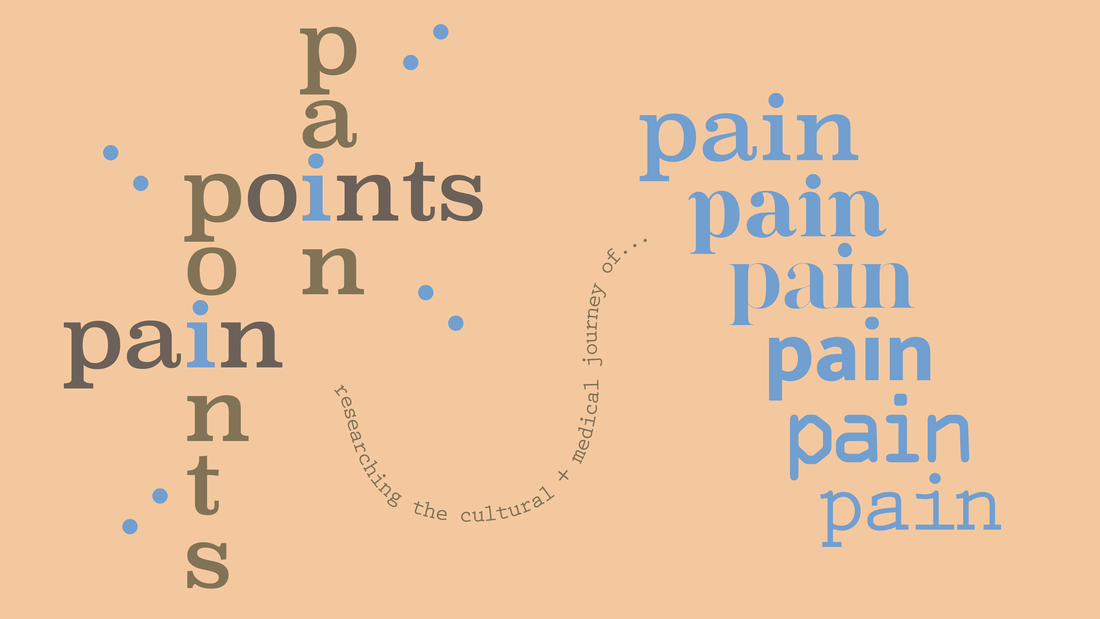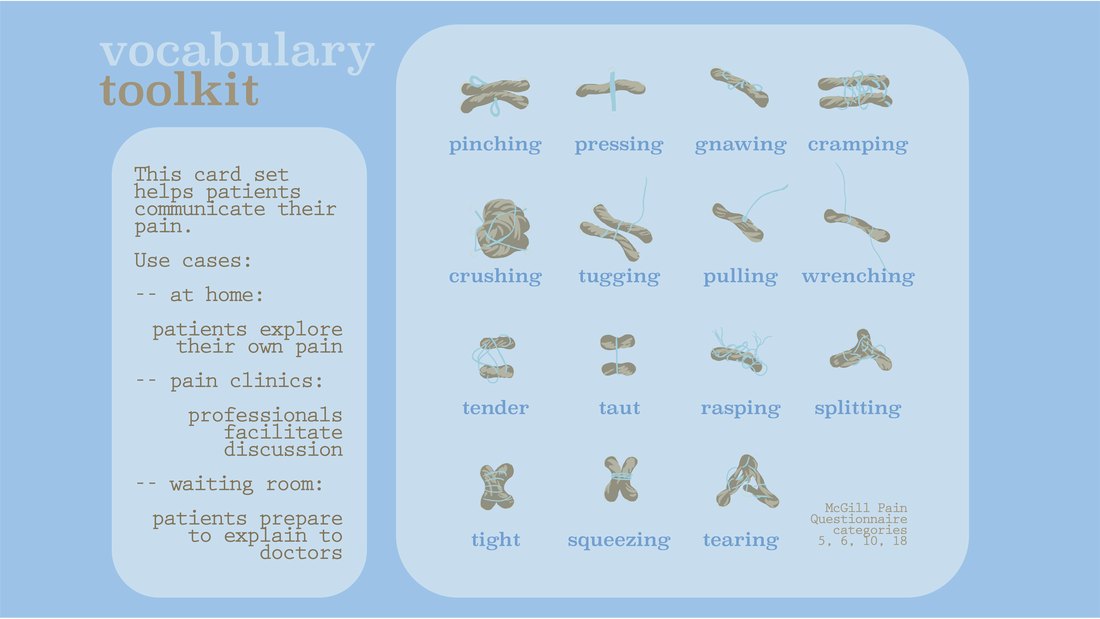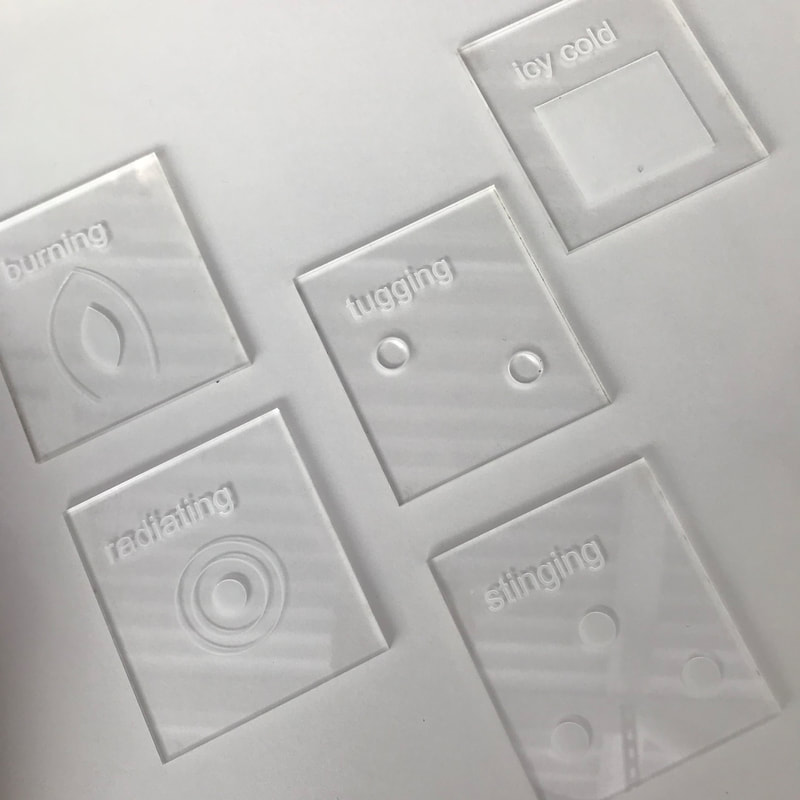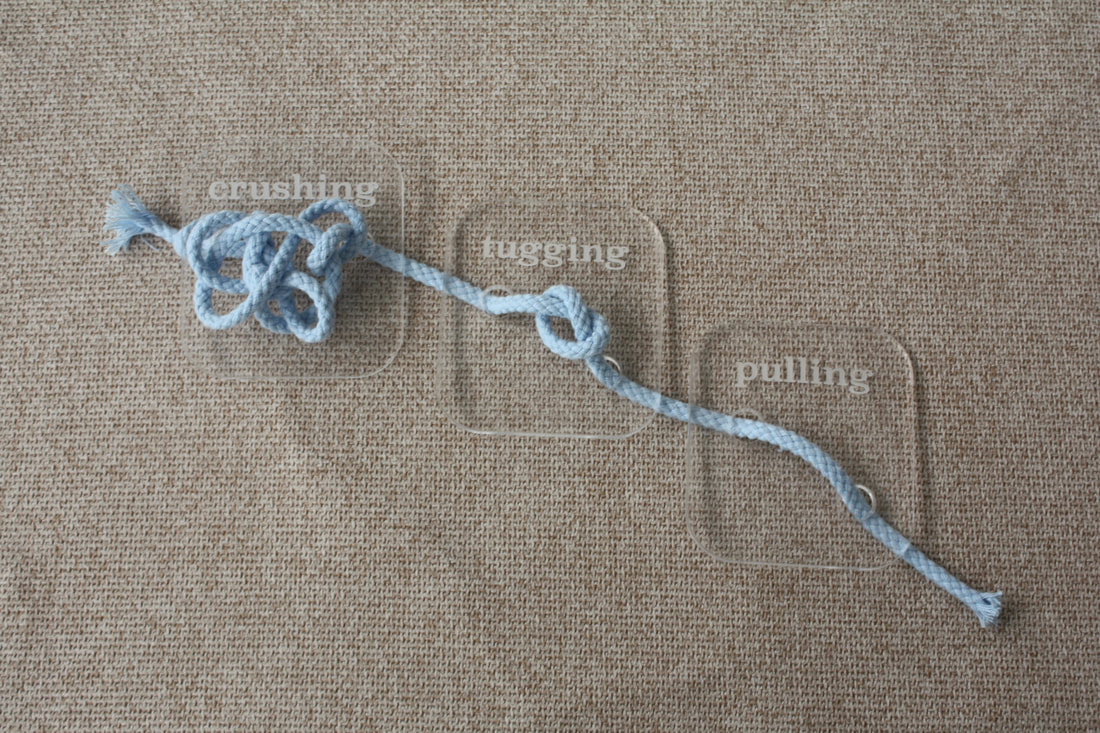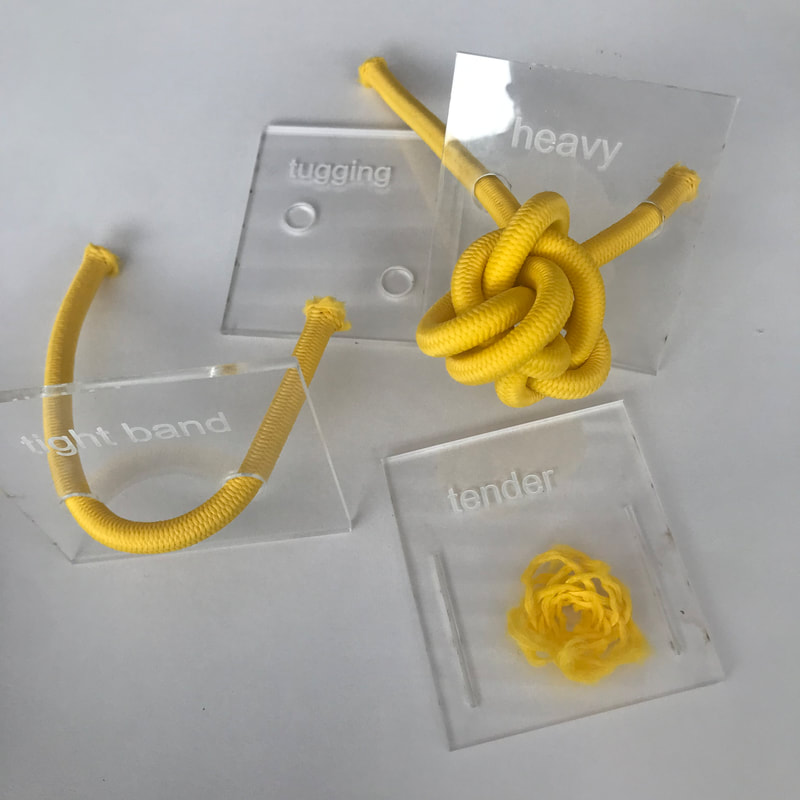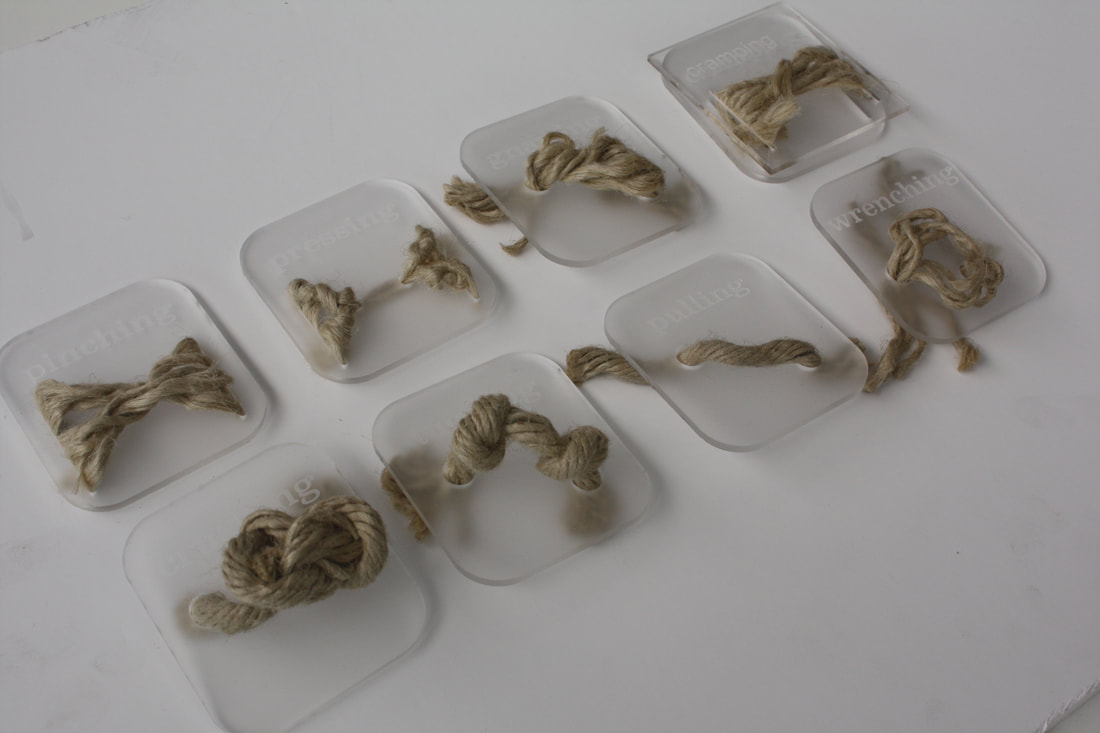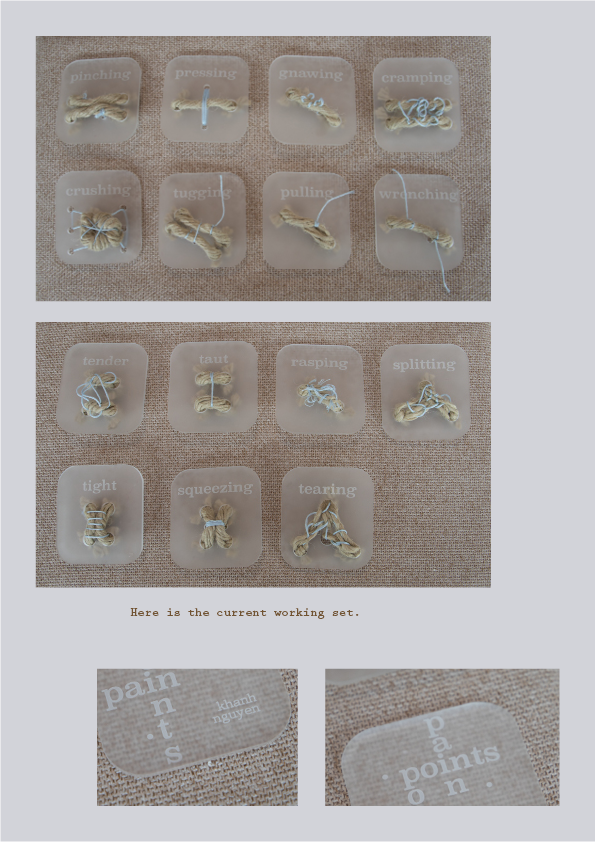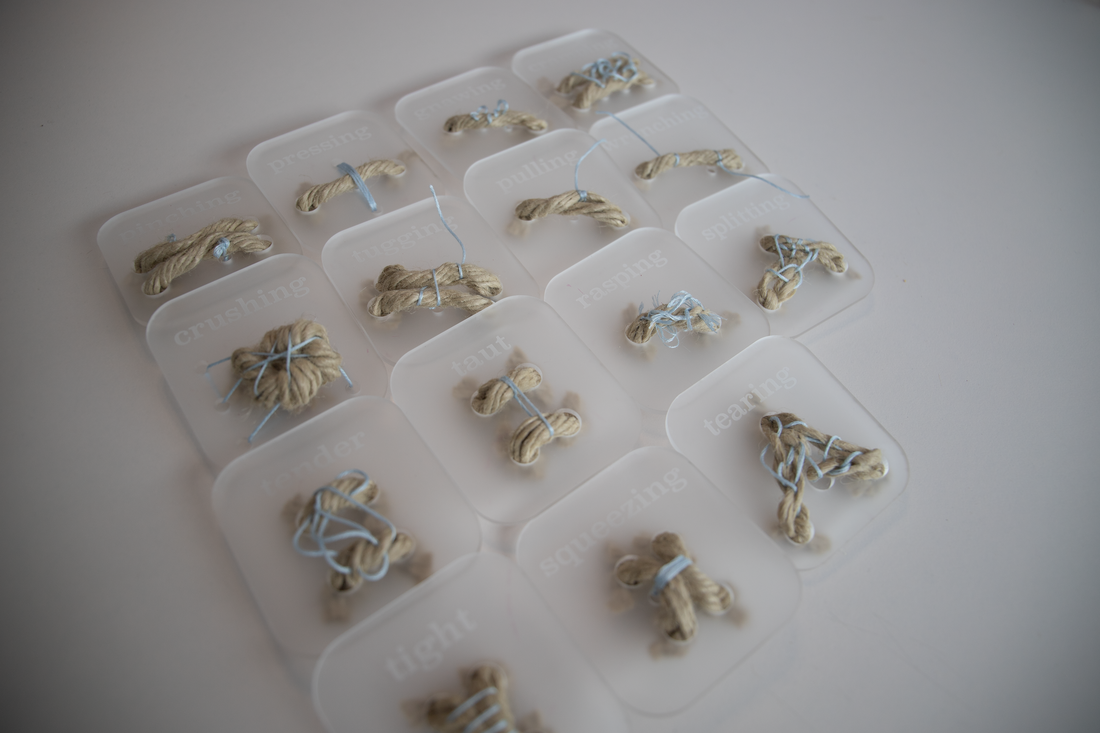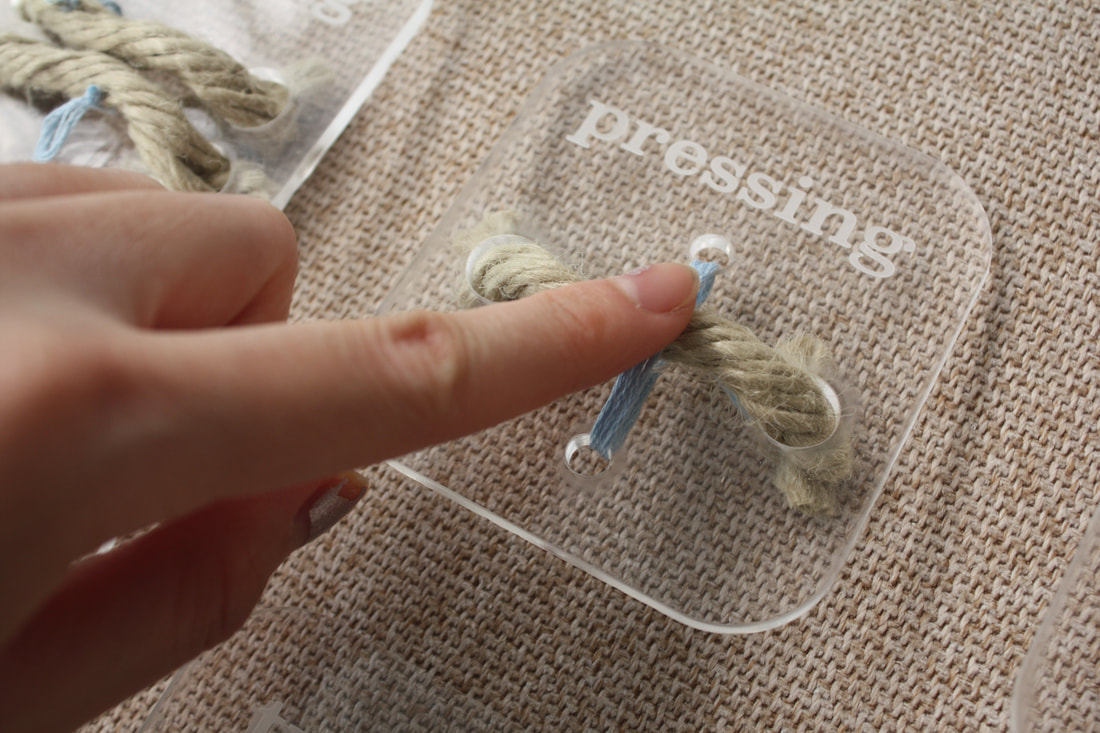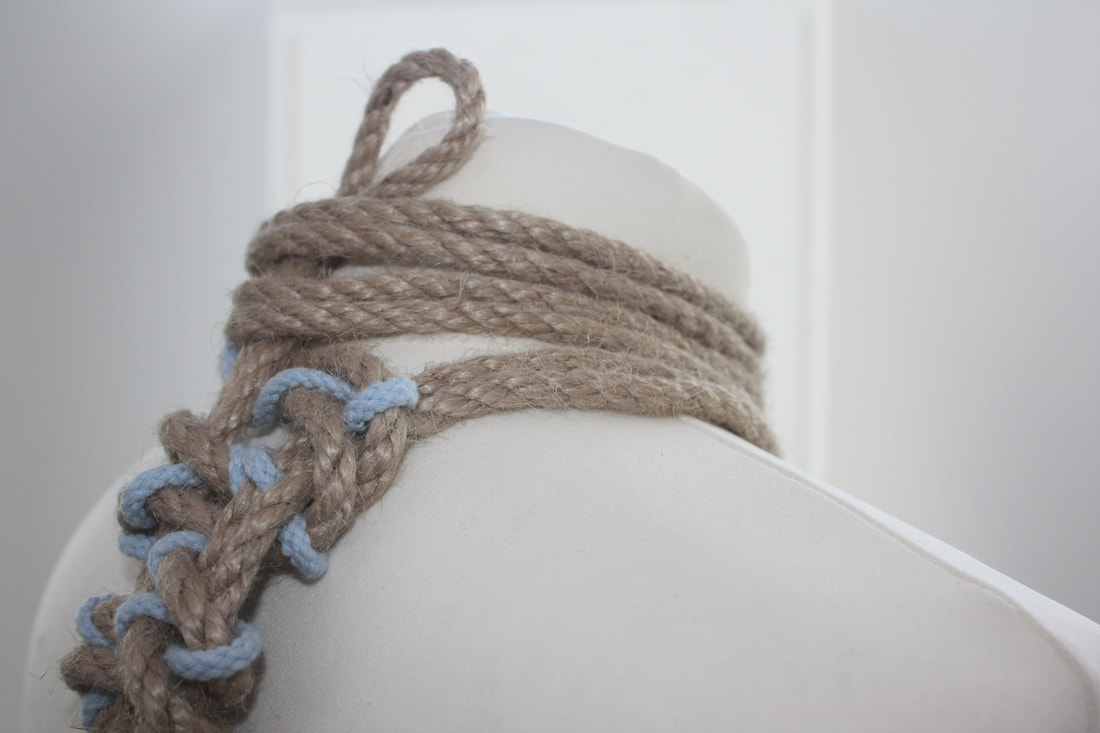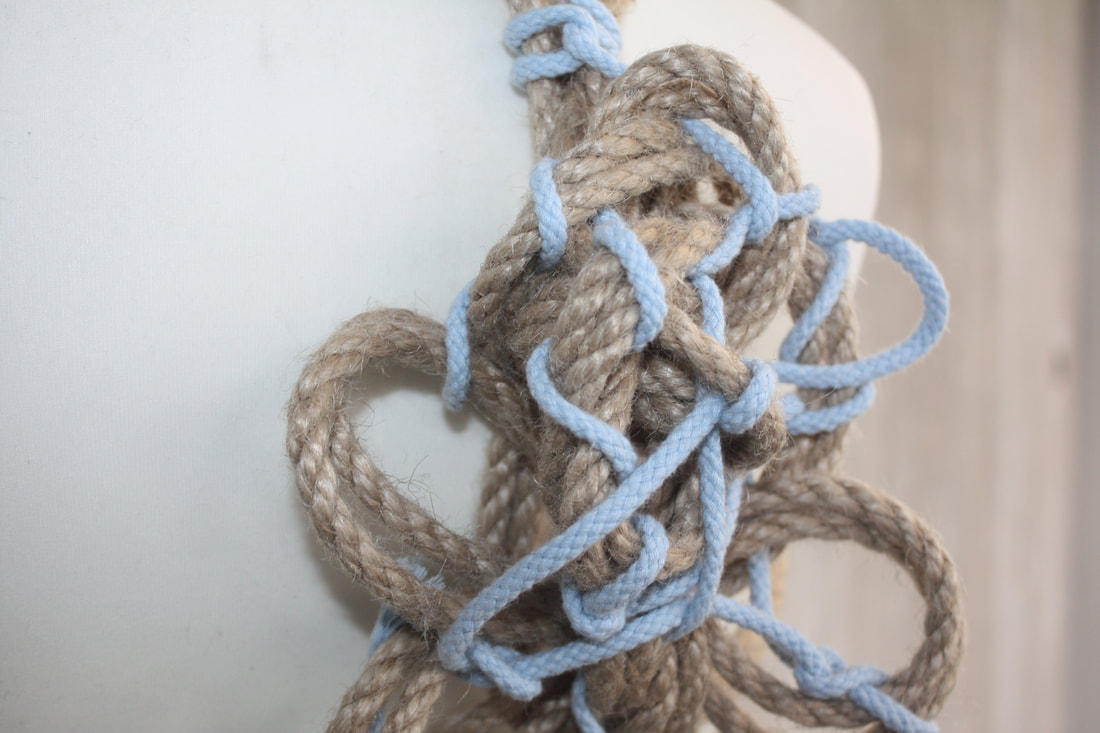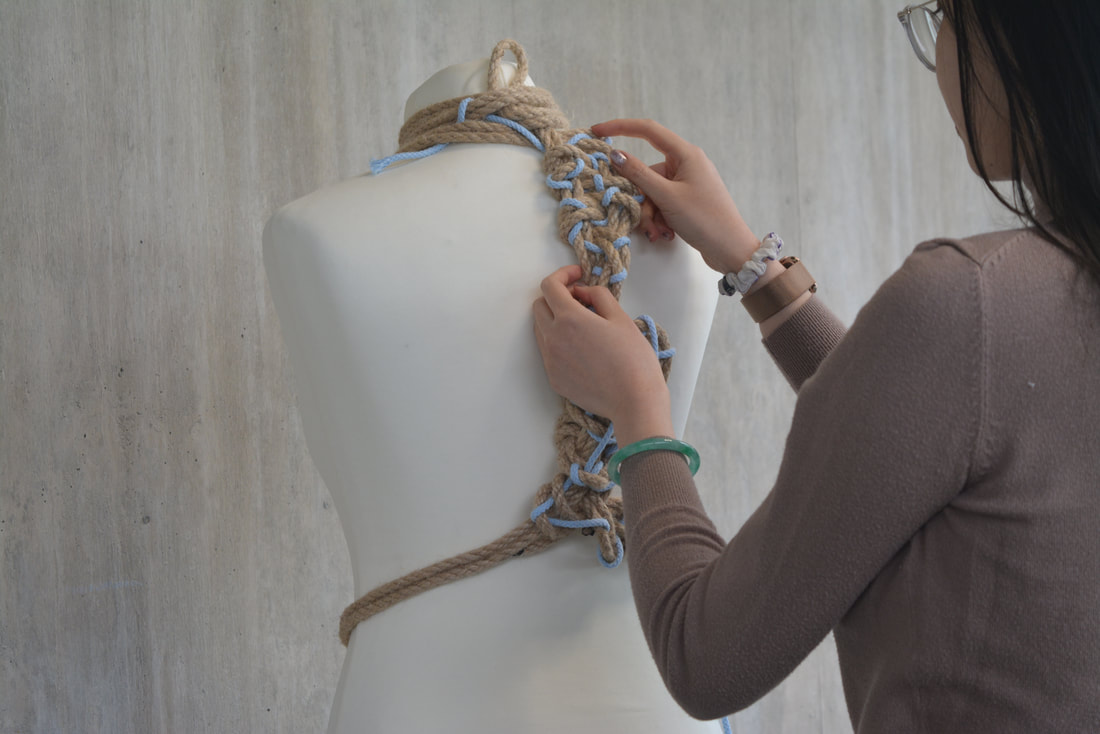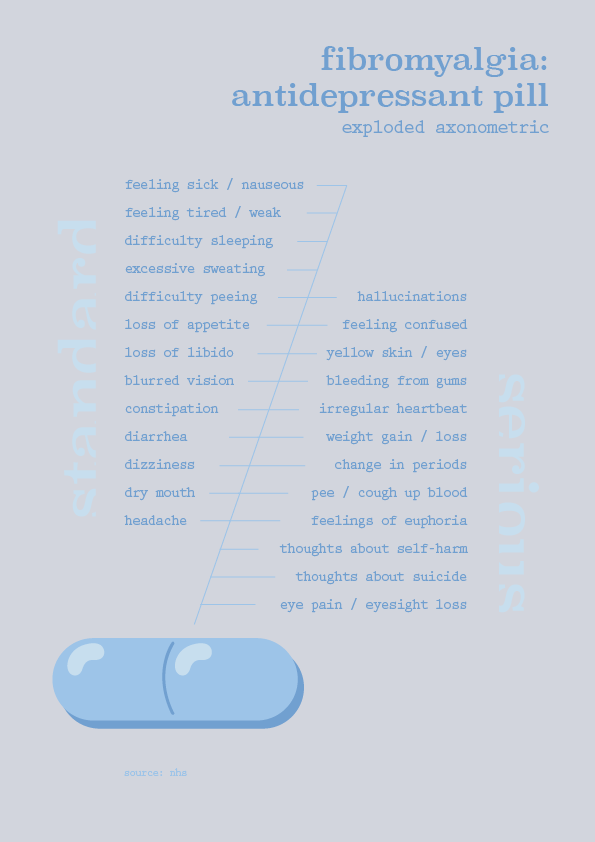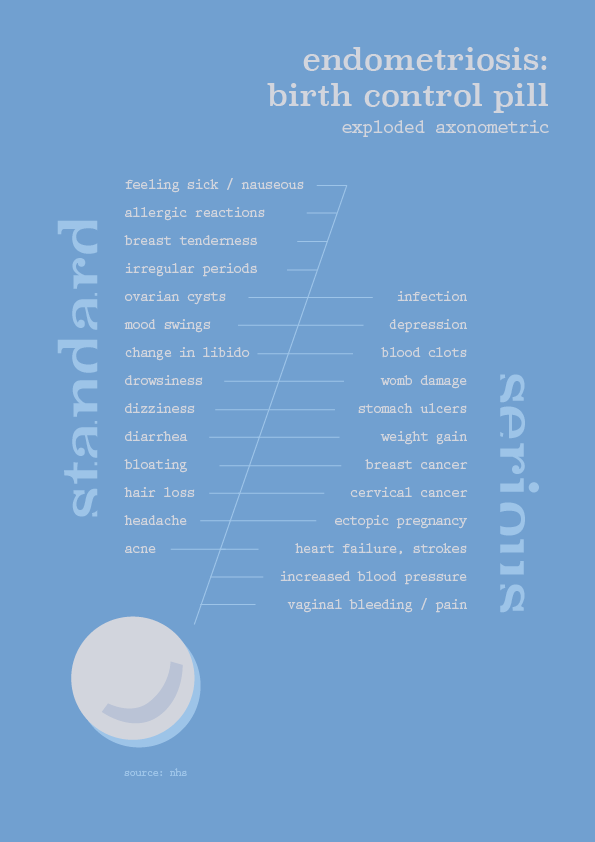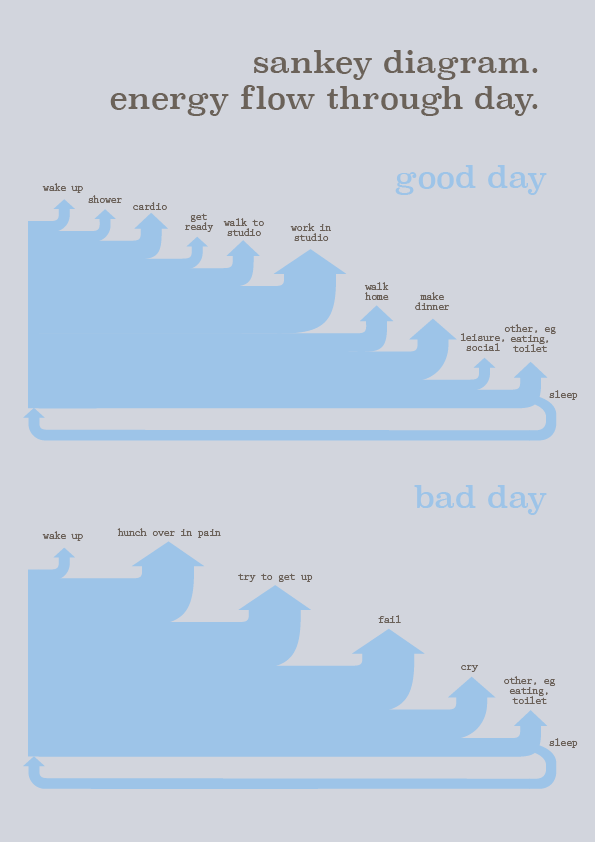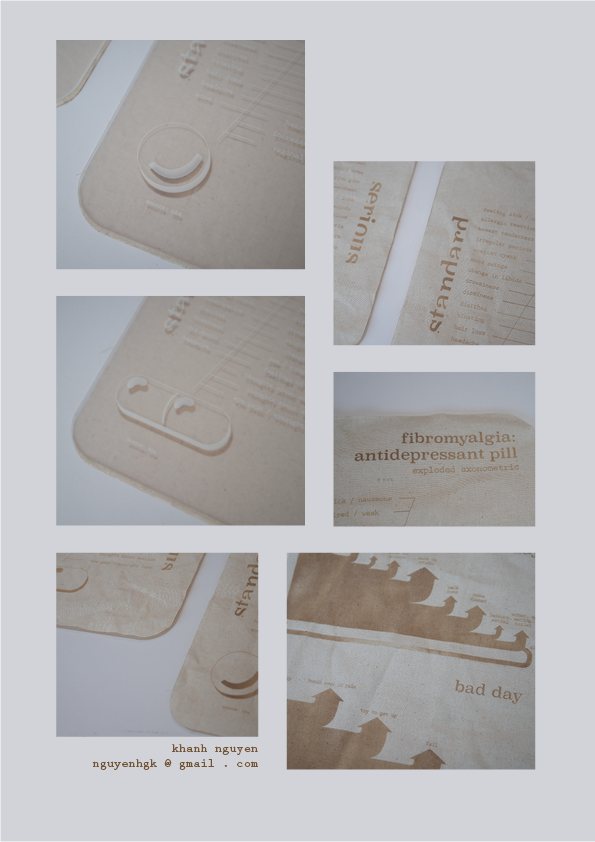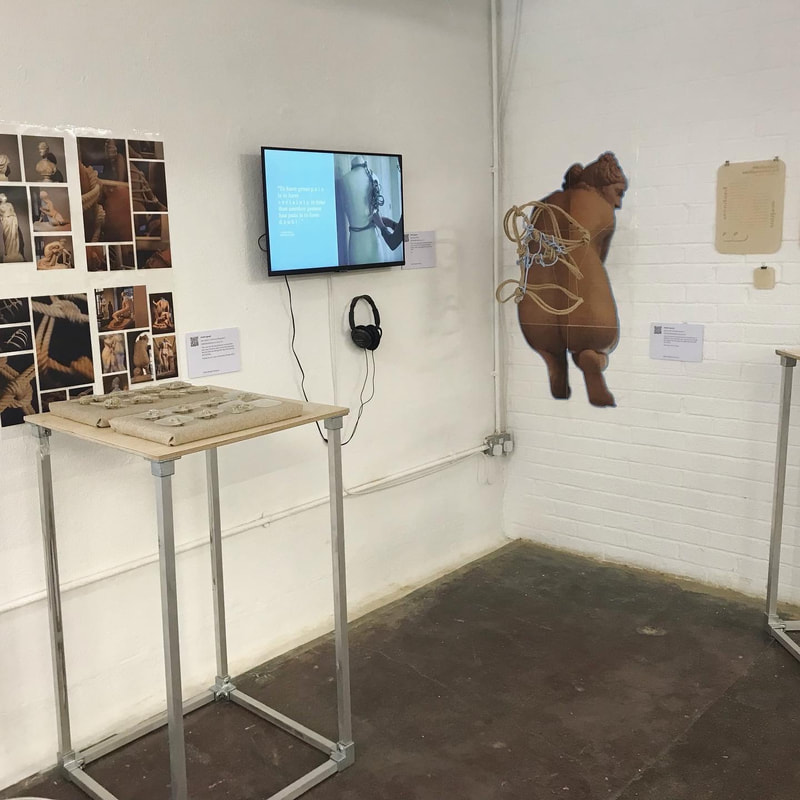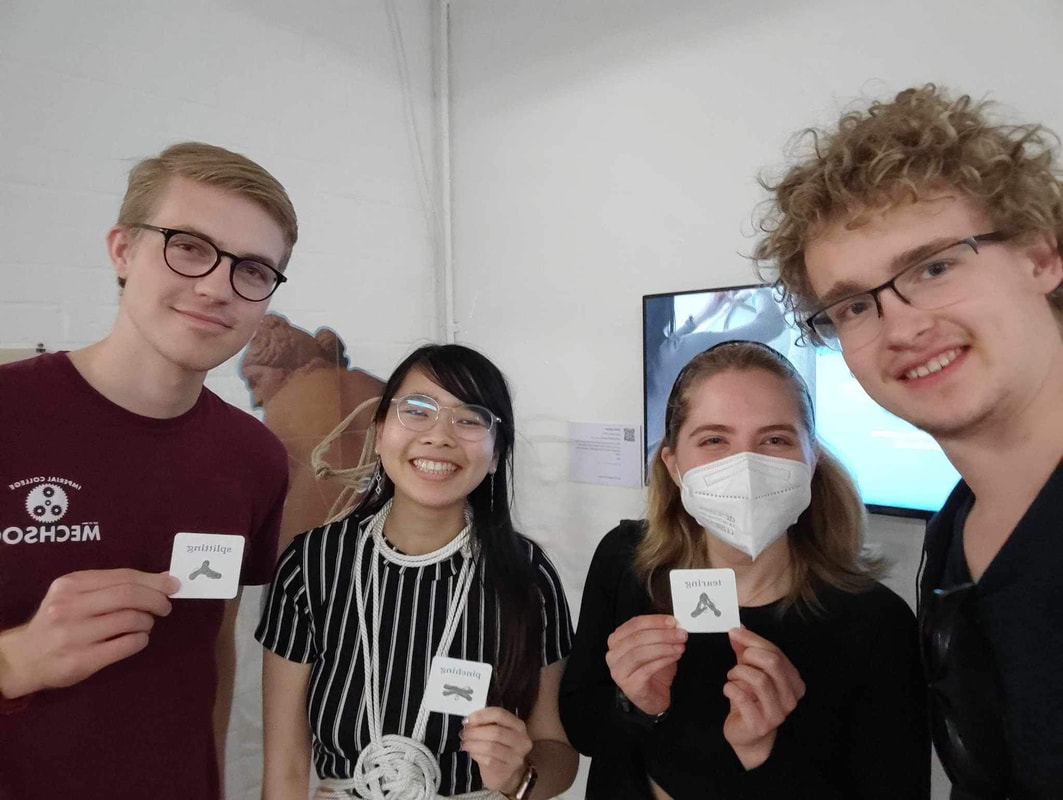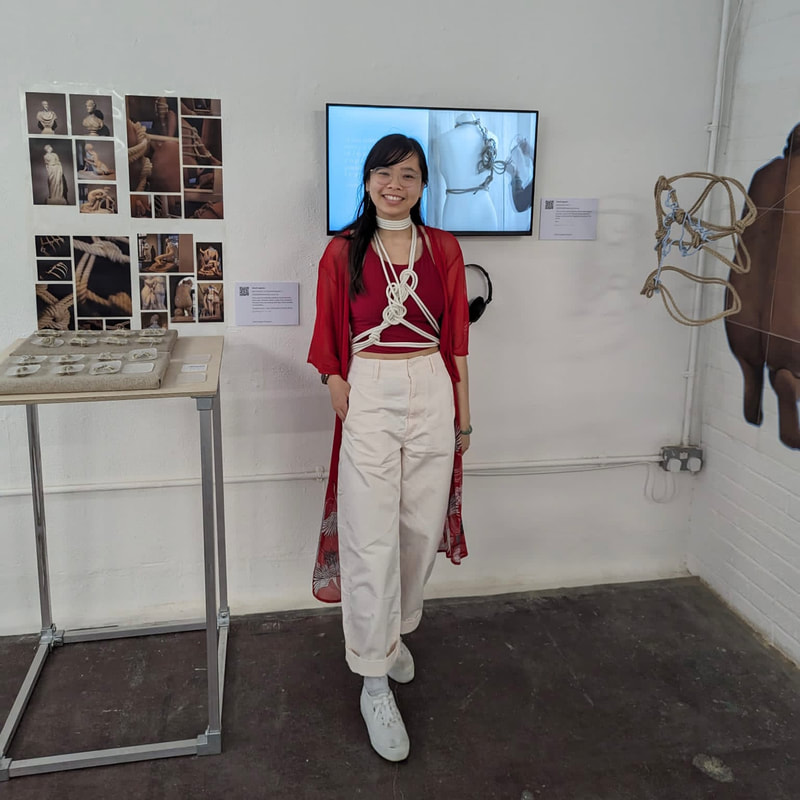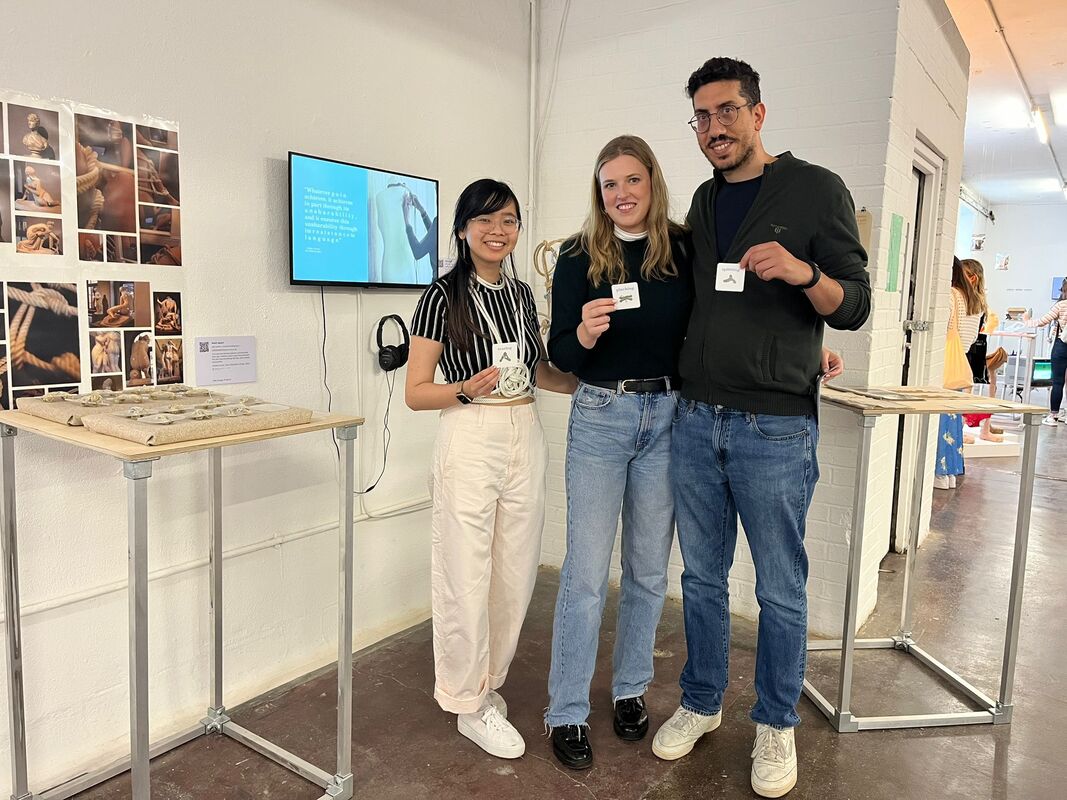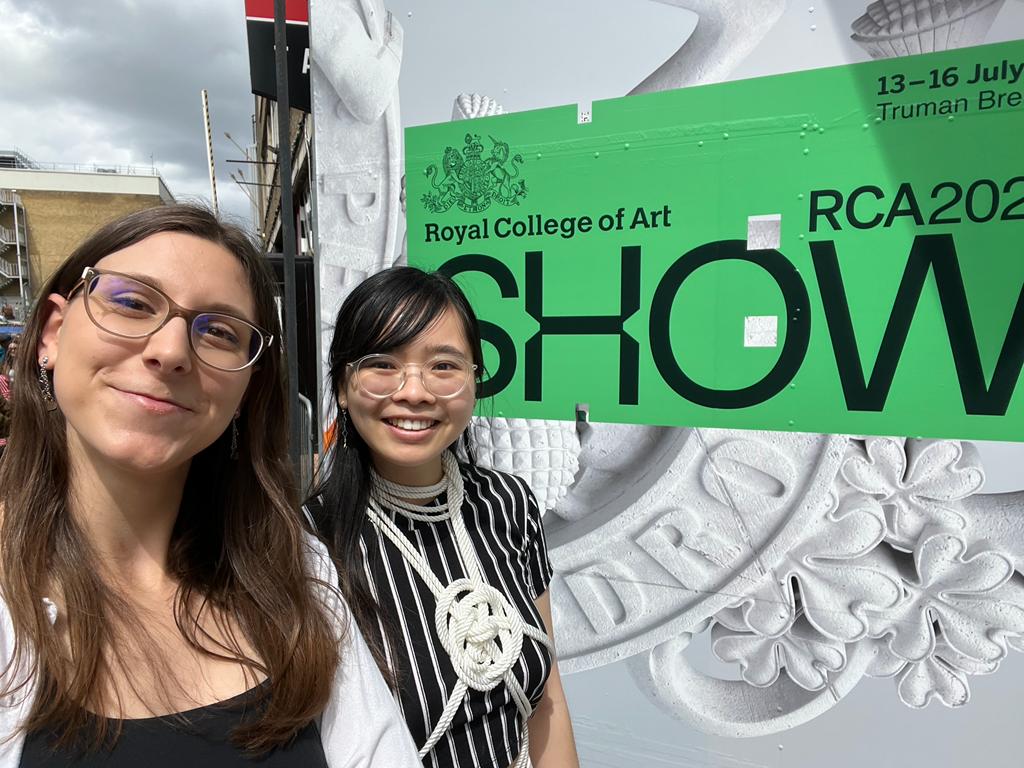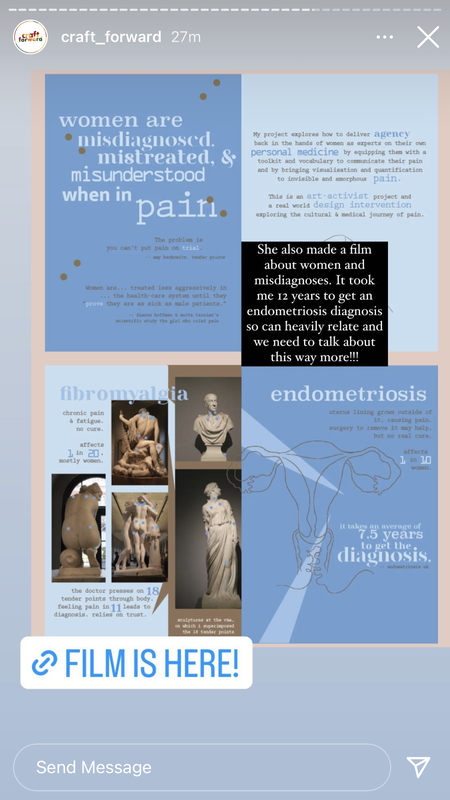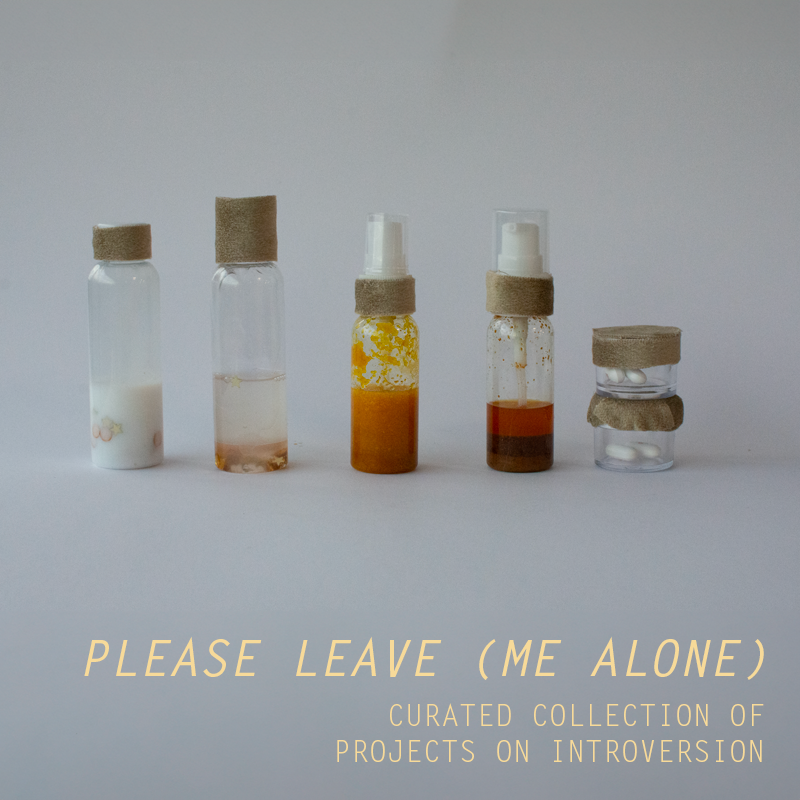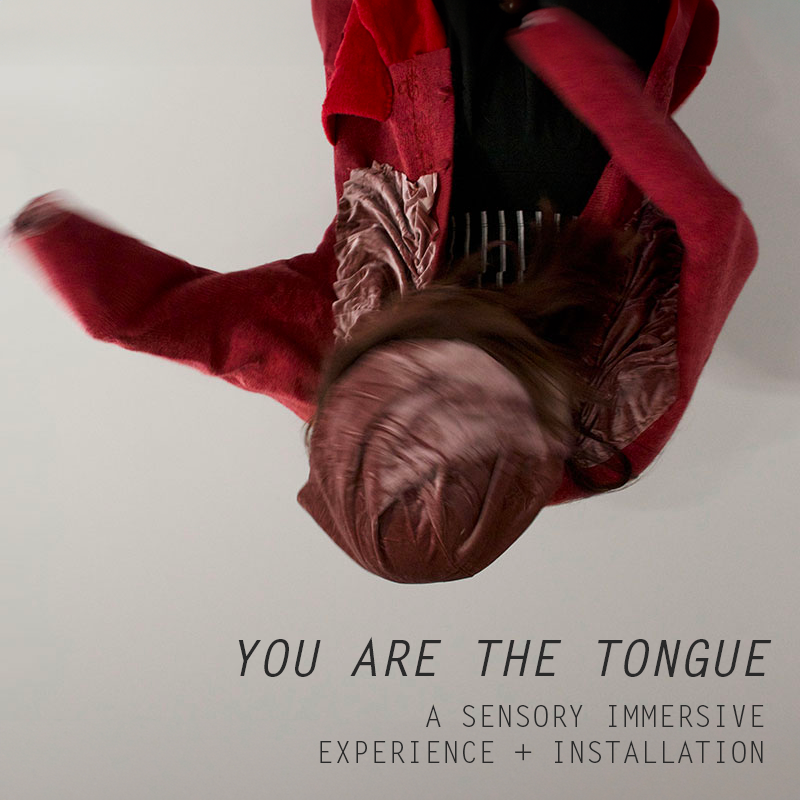pain points
a research project exploring the cultural and medical journey of pain
methods: interviews, literature review, user testing, mixed media research (alternate methods of inspiration)
tags: women's health, chronic pain, activism, cultural study, participatory design
outputs: body of research synthesized into film, zine, posters; physical products; public exhibition
tags: women's health, chronic pain, activism, cultural study, participatory design
outputs: body of research synthesized into film, zine, posters; physical products; public exhibition
context |
Women are misdiagnosed, mistreated, and misunderstood when in pain. My final Masters project explored how to deliver agency back in the hands of women as experts on their own personal medicine by equipping them with a toolkit and vocabulary to communicate their pain and by visualizing and quantifying invisible pain.
Research questions probed into the medical and cultural journey of pain, focusing on chronic pain patients, especially those with endometriosis and fibromyalgia. The end body of research and design work featured in a public exhibition at the Truman Brewery in East London in July 2023. |
fibromyalgia |
endometriosis |
1:20affected, mostly women
|
11 / 18tender points for diagnosis
|
1:10women affected
|
7.5average years to diagnosis
|
film
This film gives an overview of the project. In one thread, I use my physical designs to explore the pain in my chronic muscle knot that day. In the other thread, the words of women I interviewed or whose written quotes I took inspiration from are heard.
mixed media research practice
This project showcases my mixed media research practice, which supplements literature review and interviews with cultural-social engagement, visual experimentation, and alternative sparks of inspiration. This includes museum exhibitions, cultural events, and webinars. My research outputs can extend to exquisitely designed elements. This illustrates the breadth and depth of research that I can do for a project to create an intense, extensive understanding of a subject.
research questions |
This is not to discredit healthcare professionals. However, our medical systems, which prioritize speed over humanity, are flawed. How might we fix this? |
literature review: to gain a broad understanding
|
articles + books
found through Google Scholar, PubMed, or recommendations from librarians and scholars
|
exhibitions + events
found through design current events and endometriosis / chronic pain groups
|
interviews & synthesis |
|
After the interviews, I realized the necessity of a visual vocabulary of pain to decrease the gap between doctors who may prefer more technical terminology and patients who are coming from more emotional and contextual interpretations of pain.
As part of synthesis, here is my video summarizing key quotes from the endometriosis patient.
As part of synthesis, here is my video summarizing key quotes from the endometriosis patient.
vocabulary toolkit: communicating pain
prototypes & user testing
The prototypes evolved with many iterations and rounds of user testing to become more ergonomic and intuitive. The words and visualizations also solidified, based on input from patients, doctors, and other healthcare professionals.
two alternative research probes
|
study into Japanese shibari, a medium of rope binding art, to understand pain and the body
|
V&A photo study of 'perfect bodies' + the gendered difference between the pose male + female
|
visualising pain |
I began to delve into an artistic visualisation of my muscle knot and how that could work in conjunction with the toolkit through a workshop to facilitate patient's understanding of their pain before they communicate to others. This brings language to pain.
|
"engineering" diagrams to quantify pain |
In addition to these prototypes, I explored different ways to represent the rich arena I uncovered that might not have made its way into the final prototypes. This resulted in the creation of engineering-inspired diagrams to quantify some of the issues that patients face. I chose engineering diagrams because they are typically associated with precision and facts, things that can lend themselves to the amorphous area of pain.
|
Exploded axonometric diagrams of the most common pills given to patients of fibromyalgia and endometriosis reveal dangerous side effects.
A sankey diagram shows drainage and fatigue that patients cope with. The sankey diagram was created from data from an excel spreadsheet, and then stylized on Illustrator.
preparation for the final exhibit: stakeholder
|
|
exhibition |
These research outputs have been consolidated into a research journal, zine, and film for my final exhibition at the Truman Brewery in East London, which was open both to industry and the public. Here are some photos from the exhibition, where I was happy to share my research and prototypes with the wider London community, as well as some social media response to my work.
As an impact of this project, I am in continued discussions with RISD Center of Excellence researchers on workshops that can be set up at pain clinics. In future, I'd like to circulate this toolkit to more patients who have chronic pain and advocate for medical research into better alternatives to treat pain and better medicines without adverse side effects. |

